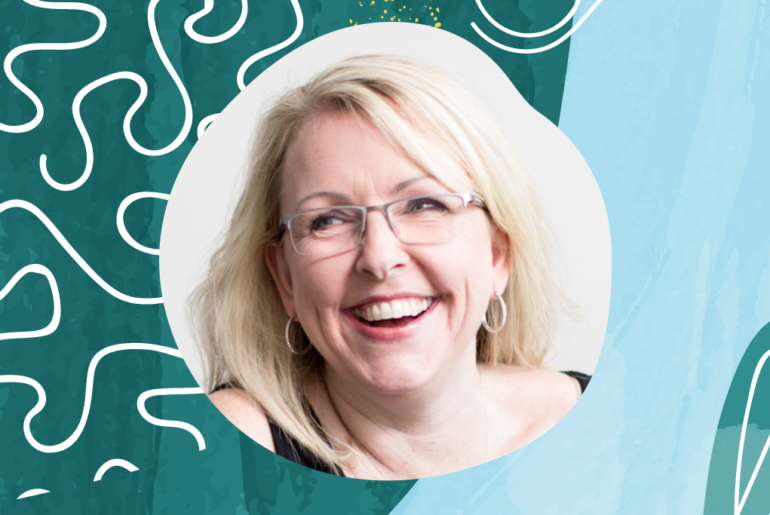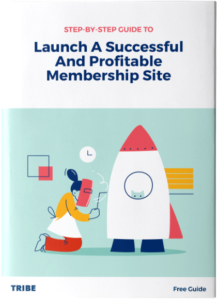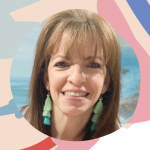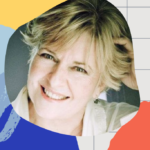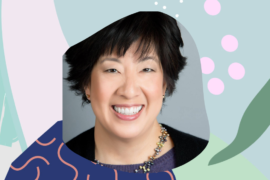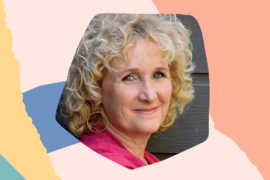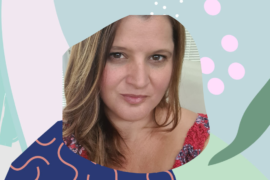Key Takeaways
- Why Brenda walked away from her careers in training and financial technology after 20 years.
- How Brenda’s experiences building her direct marketing business naturally led her to training and coaching others – and why she became an entrepreneur despite having never wanted to be one in the past.
- Why the majority of one-on-one coaching requests can be so effectively served by the membership model.
- The major mistakes Brenda made as she built her online following and created her initial content – and why less is almost always more.
Free Give
FREE Guide – Launch & Grow a Profitable Membership Site
Ready to reclaim your time and attract more monthly paying customers? Our step-by-step guide will show you how to build a membership site that turns your passion into recurring profit. Click here to download!Memorable Quote
- “It’s really a reflection of what people are asking you a lot about. What do you enjoy talking about? Because if you enjoy it, you’re going to enjoy doing it. You’re going to enjoy sharing value around that subject, and that’s where I think the greatest opportunity is to create that safety in your income level.” – Brenda Ster
Episode Resources
Transcript
Read The Transcript
Shelli Varela: Sometimes the shortest path of success is understanding the difference between how you think it has to be and how it actually can be.
Stu McLaren: There is a big trend brewing that’s revolutionizing the way business is being done. Big companies like Netflix, Amazon, and Apple are jumping on this too but so are thousands of others in all kinds of markets like photography and calligraphy, fitness, finance, meal planning, lesson planning, dog training, and so many more, and they’re doing it by shifting to a recurring revenue model. Hi. My name is Stu McLaren and for more than a decade I’ve been helping tens of thousands of entrepreneurs generate recurring revenue through membership sites. Join our host, Shelli Varela, as she takes you behind-the-scenes to see how these companies are building a thriving tribe that spends with them every single month. Now, let’s get to today’s episode.
[INTERVIEW]
Shelli Varela: Brenda Ster, welcome to the It’s a TRIBE Thing Podcast. How are you?
Brenda Ster: Hi, Shelli. Thank you for having me.
Shelli Varela: Our absolute pleasure. I had a great time with the pre-chat and your story, as per usual, is inspiring. And I know that it’s going to be super helpful for so many of our listeners and would be super grateful if you can start your story from the beginning, how you got started with the membership site you had and the journey that got you to this point.
Brenda Ster: Sure. Well, first, thank you very much for having me. I’m very, very excited to be here and very honored that I was invited. So, my story starts in the 90s. I am 148 years old. It feels like in some days. I’m 48, but I was in college in the 90s and my undergraduate degree was in communication. I have a medical condition and my parents said, “Either go to grad school or get a job,” so you have insurance. I went to grad school, graduated with a master’s degree in communication, and was suddenly overqualified and overeducated and under qualified for everything. So, my first job was an entry-level job working for a company called ExecuTrain and I started in ‘95 teaching people how to use Microsoft products. It was very much at the early side of Microsoft rolling out their entire Windows and Office package. And fun fact, I am Microsoft Certified in Microsoft Project 4.0 and 4.1. totally random fact that served me no purpose whatsoever. But…
Shelli Varela: Just to interrupt you for just a quick second for context for everybody listening like this is the very beginning of like…
Brenda Ster: Very beginning.
Shelli Varela: Yeah. So, innovative for its time.
Brenda Ster: Yeah. At the very, very early side, we were teaching people how to use Microsoft products such as how to use the mouse. In ’95, I was traveling around the state of Wisconsin, where I lived and I was teaching companies like Harley Davidson and Miller Brewing and at the time, First Wisconsin Bank to become US Bank. And we are training their employees on how to use Microsoft Office programs and we would teach them how to use the mouse by playing solitaire. It was really, really basic at the time but I’ve always had an interest in public speaking. I’m very much of an extrovert. I always had an interest in standing up in front of a room of people and that’s where I started. And from there, I was working in this training role, which I will graciously say 20 years later, 25 years later, was very underpaid, but exceptionally high training value, that I learned an immense amount of being able to think on your feet and move quickly and change quickly because we were sometimes only two or three pages ahead of what the students were learning because I was 23, 24 and had never worked in a corporate job. I never used the program that I was training on.
So, I ended up getting hired by one of my clients and moved into a training role in a financial technology company. And that started my – I was about 26 at the time. I met my husband there incidentally and I ended up staying in that company and you progressed through the career path, started a training role, into training management, move into a different department doing a manager role into a director role, and then eventually switched companies and moved into a VP and eventually SVP role. So, by the time I was in my early 40s, I had this long career track of working in training, training management, operations, operations management in the financial technology sector. And by my early 40s, I was married had two very young kids that were three and one at the time and was totally stressed out, burned out, overworked, that was on anti-anxiety medication. I was exhausted. I was traveling all the time. And I kind of thought that’s just how it was.
Like, you take a corporate life and this is what life looks like. You get up at 5:30 in the morning and you’re gone for 14 hours every day. You get home, you’re exhausted, you put the kids to bed, you do it again tomorrow. I thought that’s what life was. And my husband said, “We need to do something about this.” So, we actually made a major life change. We moved from Wisconsin to Arizona and very much of a bucket list, personal decision, not a company decision. I actually worked remotely for my company and went to my boss and said, “I want to stay in this company, but I need to do it remotely and I’ll travel back and forth every month from Wisconsin to Arizona, back and forth if you’ll let me go remote so I will be closer to my husband’s family.” And so, we moved to Arizona knowing nobody, nobody except my father-in-law.
And at that point, we were redecorating our – this is now in say eight years ago so it had been about 2001, 2011. And we were redecorating our new house we just moved into and we’re working with a lady from JC Penney’s who was doing our draperies and at the end of the transaction, she handed my husband a catalog from a direct sales company, a direct marketing company and she said to him, “Hey, take this home, give it to Brenda, and tell her to pick out something. I think she would love this.” And it was for a jewelry company. So, to this day, my husband claims the success of the entire arc that has happened since that moment because he’s the one who brought the catalog home and he claims the entire success story that’s happened since then. So, he brought this catalog home and I’m flipping through the pages of it. And it was a jewelry company that has, it’s called Origami Owl. It makes custom lockets and you tell your story with charms and things like that. And at the time, it was a new company and here’s me flipping through the catalog, circling all the things I want, flipped to the back page of the catalog and said, “Oh, well, you can buy the kit for $149 and here’s me, I just circled $300 worth of products.”
So, I said to my husband, “I can buy this kit, get a whole bunch of stuff and then buy whatever I want at cost. Is that okay with you?” He said, “Of course. Do whatever you want.” So, I ended up joining this company. Now, I had been corporate for 20 years. I had very much of a stigma of direct marketing being spammy and these, “Hey, girl,” messages of someone you haven’t talked to since high school and kind of pushy and it still has a stigma. I’m working hard to try to change it but I ended joining this company simply because it was cheaper than paying retail for what I wanted. So, once I was in the company and I started learning about the culture of once you’re inside, it’s very supportive, very empowering, very girl boss centric, very mindset oriented. And I loved the product. So, I was still traveling from my corporate job. I was traveling about 50% of the time. I was still in anti-anxiety medications and I was wearing and sharing and talking about the jewelry I was wearing because people would comment about it.
So, I was quite literally telling people they should just buy the kit. I was telling them they should do what I had done. I wasn’t intentional about it. I wasn’t even really focused on building a team or a business. I was telling people to buy a kit, because, “Hey, you like this product. Don’t pay retail. Buy the kit. It’s cheaper.” And they would suddenly buy the kit. And then suddenly, literally, within just a couple months, I had a team of about 50 to 75 people and I had leaders that were doing the same thing. So, now it was kind of like, well, I’m making a little bit of money. What’s this about? So, that turned into being a bit more intentional about, well, what is this little side jewelry thing I was doing? And so, then at that point, I was making a little bit of extra money and I was kind of like, “Well, what could this be? What could this turn into if I was intentional and thoughtful about this little direct sales business?”
And I made the decision at that point that if I was going to focus on it, I was going to focus on it in my way. I was going to do it on my own terms because direct sales is very home party-centric. It’s invite some friends over and have ladies in your living room and I grew up with or I had gone through my 20s and 30s thinking direct marketing. I didn’t go to grad school to sell jewelry in ladies living rooms. It’s not my vibe and I very much had a negative perception stigma of doing so. And so, I made the decision very early that if I was going to do this, I was going to do it on my own terms. So, I wasn’t going to do home parties or vendor events, not because they weren’t valuable, but because I was already traveling 50% of the time and I didn’t want to be going from my family and my young kids any more than I already was. So, if I was going to be home, I was going to be home with them. So, to this day, literally, my major why is I want to be home with my children at home. So, I take them to school in the morning. I’m here at 3:15 when they get home, and I’ve never gone on the weekends. So, it’s very much of a primary objective in my business and in my life. So, fast forward through that direct sales experience about a year-and-a-half later, and I had a team of almost 1,000 people, and we were doing about a million dollars in volume a year.
Shelli Varela: A thousand people?
Brenda Ster: It was nuts. I had been recognized as top sponsor two years in a row, because what I did is because I said I’m not going to do parties and vendor events, I’m going to do this online. I’m going to do it in my own way. And this isn’t about 2011 so this is early side of social innovation, early side social media marketing and I set up blog, I figured out Facebook, and I was really figuring out Google and SEO and all those elements of putting your content in a value-oriented way where people are searching for you. So, I was sponsoring very, very fast. People were coming to me, and I was sponsoring 20, 30, 40 people a month and I was all attraction-based content. So, I was pulling people in. I was creating training boot camps. It was insane. And then I was starting to teach my team to replicate it. “Well, you guys, if we’re going to do this, let’s go ahead and blow this out.” So, in my second year, as the top sponsor of the top five people on stage, three of them were on my team, and then people started noticing and saying, “Brenda, what are you doing? What are you doing differently that we’re not doing? Because come train us.”
So, I started getting invited by leaders around the company. Can you come to Florida and California and New York and train my team on what you’re doing? So, I went to my company and I said, “Listen, this is what I’m getting ready to do,” and leaders were asking me if I can help them coach their teams in social marketing.” And the company said, “Well, you can’t profit on the field,” and I said, “Okay. Well, I’m going to leave and do it on my own,” and that was four years ago. So, I left at that point and I started my own business. And it was very much on a hypothesis. At this point, I had left my corporate job and I had took sort of jumped off a cliff and hopefully, the wings appear on the way down. I feel like I’m going to lose all my income and hopefully, something will appear. And so, I jumped off the cliff, left my corporate job, and then I left the company I was selling for and my hypothesis was that there are other people out there who want to do this business better, and want to do it authentically with value and don’t want to be spammy. That was my hypothesis.
And I really had no proof and no evidence that any such thing existed and I didn’t have any idea that anybody out there was talking about this or anything like that. So, I simply started a Facebook group. Number one mistake, I started a Facebook group about a year-and-a-half before I started an email list. Talk about a major gaping hole in my strategy. Different problem. So, I ended up with a Facebook group over the course of two years of 100,000 people and to this day, the Facebook group is still very, very large and very active and I actually weeded a lot of people out. It’s sort of a bloated group at this point. So, we ended up with a Facebook group and then people started asking me for, “Okay, Brenda, my strategy was at that point, I’m just going to write a lot of blog posts, I’m going to create a lot of videos, and I’m going to monetize passively on the back end. I was going to monetize through affiliates and ads, and that’s how I’m going to do it. I don’t talk to anybody. I’ll be home with my kids the whole time.”
And then people started saying, “Well, Brenda, can you create a course for how to do Facebook parties? Can you create a course on how to do Instagram? Can you teach us about Pinterest? Can you teach about blogging? Can you teach us what you did?” And I was like, “Oh, yeah, I can do all of that.” So, I started creating a lot of content and my first year of doing it on my own, I created one course called Epic Life Facebook Parties is still to this day, my flagship course. And we sold thousands and thousands of copies of this course of how to do a Facebook party and how to create an engaging experience with your guests that’s focused on relationships and entertainment before you focus on the upsell. So, it was essentially a mini sales funnel and a [inaudible – 13:21] without even using that language or any of those terms at the time. So, what ended up happening there is people then started asking me for one-on-one coaching. And there was an explosion of a couple of different direct sales companies at the time about three years ago and those companies suddenly had these massive influxes of consultants and then people started coming to me saying, “Brenda, can you help me one-on-one?”
So, I started getting a ton of one-on-one coaching requests. So, I put together a strategy and a package of how to do that and then was completely buried in my personal capacity. I literally had none. I was creating content during the day, I was coaching in the evening, and I was skipping dinner with my family. I was missing out on everything. So, my strategy at that point was to say, “Okay, I’m just going to move them all into a single Facebook group, reduce their price point, and suddenly I had a membership group, and I didn’t even know that’s what it was called.
Shelli Varela: The accident membership site.
Brenda Ster: It’s quite literally an accidental membership site. But it was really based on demand of people coming to me, saying, “Hey, can you help me with this thing?” And then I had 20 people or actually at the time I had about 75 people that I was doing one-on-one coaching with and that is just not sustainable in personal capacity. When all those calls are basically the same call, they’re all talking about the exact same introductory things. So, I put them all into a group. I lowered all the price points. I said, “Hey, guys. Let’s just do it all here.” And that’s how I got to a membership.
[ANNOUNCEMENT]
Stu McLaren: So many people in all kinds of niche markets are leveraging their existing knowledge and influence and they’re transforming it into passive monthly income. This isn’t luck. This is a repeatable formula for producing a growing subscription income and if thousands of others can do it, you can too. To find out what type of membership site would be right for your business, visit GetTRIBEGuide.com. Go to GetTRIBEGuide.com and download it today. You’re awesome!
[INTERVIEW]
Shelli Varela: I love this full-circle moment because you were talking about when you had your corporate job, and you didn’t want to take on anything extra. You didn’t want to take any more time away from your family. And then once you switch over to this…
Brenda Ster: Exactly. That’s exactly right. Yes, my husband and I we never fight. We just never ever fight and I will tell you that about two years ago, two-and-a-half years ago, he was saying things like either you choose the business or you choose the family. You have to figure out what you’re going to do here because this is not sustainable because I was back to that point of being stressed out and I was anti-anxiety and I was missing dinner with my kids three or four nights a week. It was a bad, bad pivot point.
Shelli Varela: What is the best part of the membership in terms of writing that shift for not only your personal capacity to be able to help people that, ultimately, are asking very similar questions, and also for the quality of the return to your family and the very thing that was your priority the whole time?
Brenda Ster: So, the fact that I pulled everyone into a Facebook group made my life immensely easier almost immediately. And it was small at the time. When I first opened my membership group, I put all my private clients into it, there was not more than about 50 people. And so, the money was not huge or anything like that because I intentionally lowered the price, brought it way down. I figured I will talk to everybody at one time. I will create some content. Will have it all in this one single Facebook group and the community will help sustain itself. But I immediately regained my life, which was the big, big, big benefit. So, this was at the time I didn’t even know it was called a membership. I was just like, “I just need something.” Can we create a PayPal link? Can we create a subscription link? I didn’t know the first thing about what I didn’t know. And then what ended up happening and this is where it just the story is so crazy when I think about it in hindsight, within a year, the membership with zero marketing exploded to 3,000 people.
Shelli Varela: Incredible.
Brenda Ster: Well, right, because there was nothing like it in direct marketing. There was nobody talking about social marketing with value in this sort of attraction-based content, creating authentic relationships and engagement with your community. But what I didn’t know at the time was that my thought was, well, if some is good, more is better. I will just give them everything I possibly can. I will go live every day. I will make files all the time, I will create tons and tons and tons and tons of content for them. And they can just pick and choose whatever applies for them and their business. Well, that’s just the biggest giant mistake ever because a year later they were insanely overwhelmed. And I lost 50% of my membership in the second year. So, I went from 3,000 down to about 1,500 and at this point, I had scaled up to support this giant Facebook group, the courses we had created, the one-on-one coaching I was doing and now this membership site. So, now I know how to staff and we had all these systems and I had all this expense I was carrying.
And I never wanted to be an entrepreneur. I had never ever, ever wanted to be an entrepreneur. My family was entrepreneurs. My parents are and I remember fighting about money at the kitchen table and just we never took a vacation. We never went anywhere. I remember being a small business owner being always fighting about money. That’s my entire framework of my dad owned a manufacturing company. So, I had no aspirations to ever be an entrepreneur. It was never my lane. That’s why I had this whole corporate trajectory for 20 plus years and so now here’s me stressing out about money and stressed out about my family and stressed out about my staff. So, a year ago, April, is when someone mentioned Stu to me in passing and said, “You need to go follow this guy. He talks about memberships and people. He probably can help you.” And I didn’t even know who Stu was for not even two weeks, and I was on the list and I was ready to join TRIBE. And then that changed everything. And from that point forward, we had a very methodical phase plan of how we fix the issues that were in my membership. So, let me pause for a second because I realized I’ve talked in one gigantic run-on sentence.
Shelli Varela: Yeah. I want to circle back because I want to be able to use your genius to circle back to the listeners. And my question for you is when you were talking about your corporate life and how it was and you just thought like, “This is just how it is,” what did you learn about how it can be and what are the steps that you would give in terms of advice for anybody who’s listening right now who thinks they’re in a situation where it’s like, “Well, this is just the way it is?” What would you tell them about the possibility of how it can be?
Brenda Ster: Well, the first thing, so when we were living in Wisconsin, we had two young children. At the time, I had one young child, my daughter. We were getting up at 6:30 in the morning. We were leaving the house at 7:00 and we weren’t getting home until 7:00 at night. We commute an hour each way, daycare drop-off. We went to work in the dark, we came home in the dark. We thought that’s how life was. And when we moved to Arizona, we immediately, well, still even working corporately, we regained time simply because we were working on different time zone schedules now and we were working at home. So, suddenly, by 3:00 in the afternoon, we were both done working and we were kind of like, “Well, what do we do with ourselves? This is new. We don’t even know what to do with ourselves. We would do our grocery shopping and we sort of regained time before we had any other sense that something could be better.”
So, the first thing that was really helpful for me and my husband and I still talked about it a lot to this day is how our life rhythm has shifted, how our rhythms have shifted in terms of how our daily life flows, how we get up, what we do in the morning, when we’re with the kids. What we do with the kids is a lot more intentional, a lot more value-added. And when we were still working corporately, and we were just sort of grinding it out for 12 hours a day and that 12 hours was simply commuting, working, and commuting, and you get home and you have dinner and you do bath time and you do homework and you put the kids to bed and you don’t really have any of that quality time. I didn’t know what when I was in it. You’re just kind of like, “Well, this is how it is. This is what life is.” So, it wasn’t until we had more time that we could be more intentional with the quality of that time. And the quality of that time changed because it wasn’t just, well, I’m going to get my grocery shopping done. It was I’m going to spend an hour and we’re going to go for a bike ride. And like last night, literally, last night it was a Sunday night but last night my kids and I took a two-hour walk to the grocery store. That’s about, I don’t know, a mile and a half away. We went to Starbucks and we walked home. We told stories and we talked about our favorite Disney movies for two solid hours. There was nothing of any significance there other than the fact it was quality. I never would have had that in my old life.
Shelli Varela: If I can jump in, I will argue that it’s very significant and also times like that are the bonding moments that create relationships and deepen relationships. And I’d be curious, you know, when your kids are a little bit older and a little bit further along, I’d be curious, because I would bet that memories like that are going to be the things that mean the most.
Brenda Ster: Yeah, and you’re absolutely right. The memories are made in the small moments. They’re made in the consistent moments. So, there are things that I’m very consistent and intentional about now that I simply didn’t have time for before. And now I choose my time differently because my membership now provides about 50% of the revenue of my business. And that is a base every month that I come into knowing is safe. So, that 50% base is what pays my team. And then we earn the rest through our courses or coaching or anything else that we do. But that 50% is the base of our revenue. So, my daily flow is much more flexible. It’s much more, it’s an easier flow, right? I’m not stressed out about being out here at 6:00 in the morning, because my kids don’t leave the house until 8:05. I’m in the house at 8:05 and they walk out here, my husband picks up my kids, and they bring me a diet coke at 3:15 every afternoon. That’s just how the flow is. I work at home and we actually bought a house that has a guest house behind my house because I didn’t want to have to go to a small office space or anything like that. My staff works literally on my physical property. They come here because it was very important to me to kind of manage that why.
Shelli Varela: Last question. You have such a wealth of experience and success and knowledge and communication and all of the things. If you were to be able to give our listeners one piece of advice who are maybe sitting on the idea of, “Is a membership possible for me? Should I give it a try? Or what might that look like?” what would your advice be?
Brenda Ster: My advice would be to really think about where you are already getting asked a lot of questions or where your natural expertise lies. What are people already asking you about for advice, guidance, coaching insight, because there’s a space there that other people have questions that I simply haven’t vocalized them. And I didn’t have any intention of building a membership. It was never on my roadmap. It was never on my strategic radar. I didn’t even know that it existed. I didn’t know such a thing there was but it came because people were asking me questions about things that I know and I can talk about, and I didn’t talk about it earlier, but my membership was very broken after I had gone through this big growth curve, and it dropped off a cliff. And I really went through it a very intentional process of fixing it and that’s where I had to stabilize my existing membership before I could bring in new members. There’s a whole lot of learning and that have come across every single step. So, it’s really a reflection of what are people asking you a lot about, what do you enjoy talking about because if you enjoy it, you’re going to enjoy doing it, you’re going to enjoy sharing value around that subject. And that’s where I think the greatest opportunity is to create that safety in your income level in how you can serve your community and how you can create community.
Shelli Varela: I love it. And yeah, I agree with you in that oftentimes the things that we know the most about are the things we don’t fully value because they come so easy to us. So, thank you for that. If people are looking for you online, where is the best place that they can reach out to you?
Brenda Ster: The best place to find me is on Facebook. On Facebook, I am Facebook.com/SuiteBrenda. That’s my Facebook page.
Shelli Varela: I love it. Thank you so much for your time. Thank you for sharing your incredible journey and also your success story is more than inspiring, so we appreciate your time.
Brenda Ster: Thank you, Shelli.
[CLOSING]
Stu McLaren: I hope you love that story. It’s amazing, right? That’s what It’s a TRIBE Thing is all about. So many people in all kinds of niche markets are leveraging their existing knowledge and influence and they’re transforming it into passive monthly income. Listen, this isn’t luck. There’s a repeatable formula for producing a growing subscription income and each week we’re going behind the scenes to show you exactly how they did it. Get the latest stories and actionable ideas from each episode at www.ItsaTRIBEThing.com and if you know one other person who could benefit from this, tell them to subscribe. Tell them to go to ItsaTRIBEThing.com.
[END]
To learn more and get access to all episodes, visit our podcast page!
